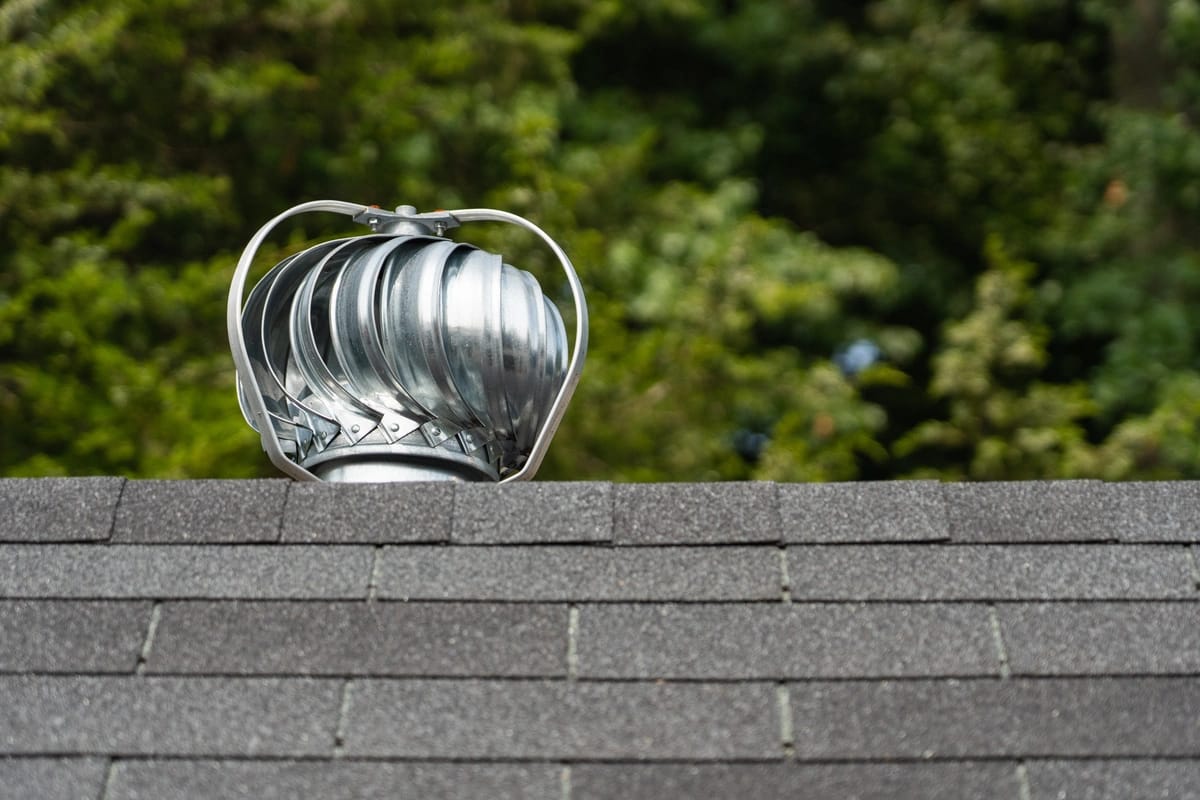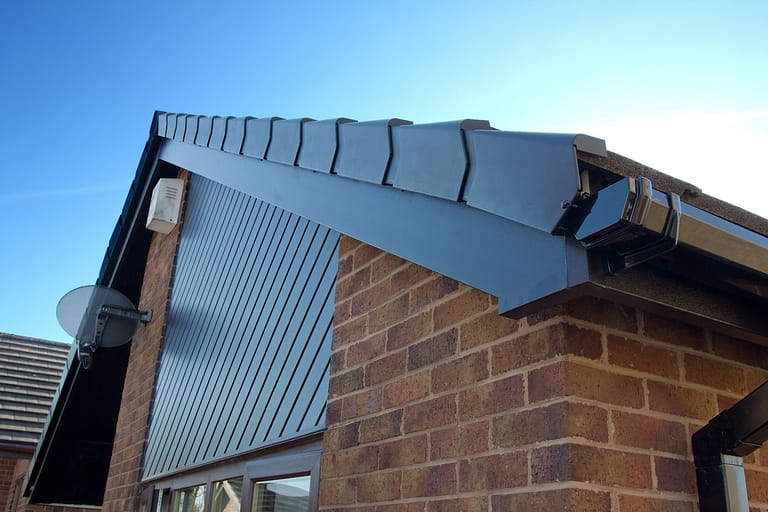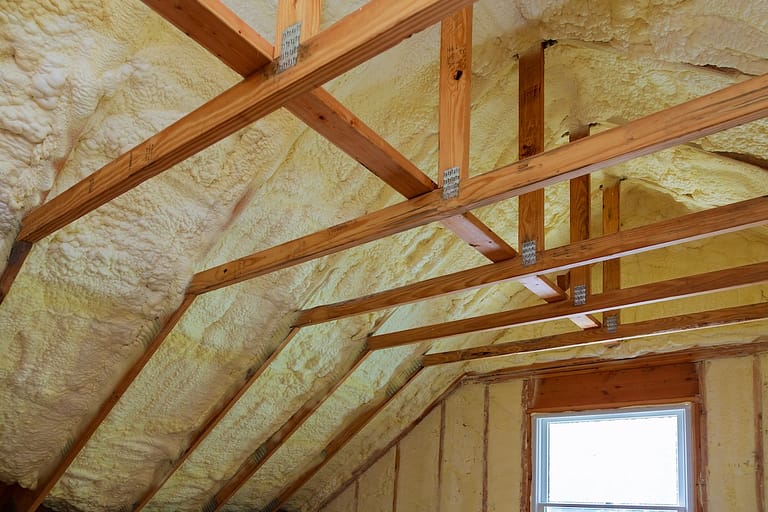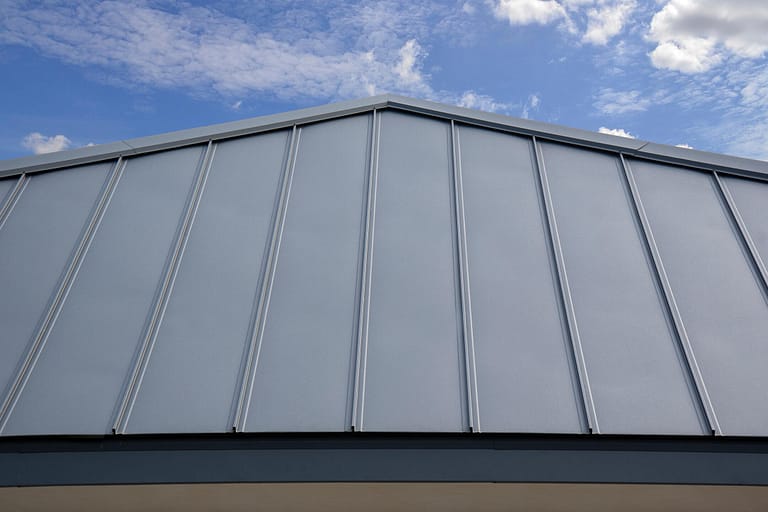Winter is stressful enough – an icy roof is the last thing you need. But that’s often what you get when you don’t have proper roof ventilation.
Roof ventilation stops ice dams and causes hot air to rise up and out. This can help reduce your cooling bill during the hot summer months and warm days. But how does roof ventilation work? And why should you invest in it?
Today, we’ll be explaining everything you should know about using ventilation fans on your roof, including:
- Is it a wise investment?
- What are the different options?
- How does it actually affect your roof?
Keep reading to learn about all of that and more!
What is Roof Ventilation?

Roof ventilation is a crucial aspect of maintaining a healthy home environment. It involves the installation of vents and fans that allow air to flow freely in and out of the attic or roof space. The process of roof ventilation facilitates proper air circulation, preventing the buildup of heat and moisture that can cause significant damage to your roof structure and compromise the health of your home.
Without proper roof ventilation, the attic becomes stagnant, with hot air and moisture trapped. This leads to many problems, such as excessive heat, mold growth, wood rot, and reduced energy efficiency. The heat accumulation in the attic can lead to higher energy bills as it adds strain to your cooling system. Proper roof ventilation ensures heat and moisture are effectively removed from the loft, preventing costly repairs and improving energy efficiency.
Importance of Roof Ventilation for Your Home
So, you understand what ventilation is. But is it really all that important? It sure its! Here are some of the benefits of roof ventilation.
Prevents Heat and Moisture Buildup💧
When hot air becomes trapped in the attic without proper ventilation, the temperature can soar, resulting in various issues. Excessive heat not only makes your living space uncomfortable but also causes damage to the roof shingles. When shingles are constantly exposed to high temperatures, they can become brittle and crack, leading to leaks and the need for premature replacement.
Moisture buildup is another concern in poorly ventilated attics. The lack of proper airflow can cause condensation to accumulate, leading to mold growth and wood rot. Mold not only affects your health but also compromises the structural integrity of your home. BEnsuringadequate roof ventilation prevents heat and moisture buildup, avoiding these costly and potentially hazardous issues.
Extends the Lifespan of Your Roof 🧓
Roofs are susceptible to damage caused by heat and moisture. When a roof is exposed to excessive heat for prolonged periods, it can cause the sheathing, rafters, and other structural components to deteriorate prematurely. Moisture buildup due to inadequate ventilation can lead to wood rot, compromising the strength of the roof structure. By implementing proper roof ventilation, you can significantly extend the lifespan of your roof, saving you money on repairs or replacements.
Improves Energy Efficiency💡
Proper roof ventilation plays a significant role in energy efficiency. During hot summers, when the attic is not adequately ventilated, trapped heat can radiate into the living space, causing your cooling system to work harder to maintain a comfortable temperature. This increased strain on your HVAC system results in higher energy consumption and inflated utility bills. With proper roof ventilation, hot air is effectively removed from the attic, reducing the need for excessive cooling and improving energy efficiency in your home.
3 Types of Roof Ventilation Systems
1) Ridge Vents:
Ridge vents are installed along the peak or ridge of the roof. They provide a continuous ventilation system that allows hot air to escape from the attic. Ridge vents are popular among homeowners for their inconspicuous appearance and effectiveness in facilitating constant airflow. They work in conjunction with soffit vents to create an efficient ventilation system.
2) Soffit Vents
Soffit vents are located along the roof’s eaves, near the gutters. They allow fresh air from outside to enter the attic through the underside of the roof. Soffit vents work with ridge vents to create a balanced ventilation system that promotes continuous airflow, efficiently removing heat and moisture.
3) Attic Fans
Attic fans, also known as powered ventilators, are electrically powered fans that actively assist roof ventilation. They are typically installed on the roof or the gable wall and provide additional airflow when natural ventilation is insufficient. Attic fans can be controlled manually or by thermostats, ensuring optimal ventilation based on temperature conditions. They are instrumental in areas with high humidity or limited natural airflow.
Benefits of Roof Ventilation

Want to understand the benefits of roof ventilation? Here are just a few examples of how roof ventilation can improve your home’s safety, and your quality of life.
- Improved Home Air Circulation: Proper roof ventilation ensures that fresh air circulates throughout your attic and home. It prevents stuffiness and eliminates stagnant air, reducing the risk of moisture-related issues, such as mold growth and wood rot. This promotes a healthy living environment and improves indoor air quality, benefiting your family’s well-being.
- Enhanced Energy Efficiency: With efficient roof ventilation, your attic remains more relaxed during the hot summer. By removing excess heat, your cooling system doesn’t have to work as hard to maintain a comfortable temperature, resulting in lower energy consumption and reduced utility bills. Decreasing dependence on air conditioning and proper roof ventilation contributes to a more sustainable and environmentally friendly home.
- Prevention of Ice Dams in Winter: In cold climates, ice dams can form on roofs without proper ventilation. Ice dams occur when warm air from the attic melts snow on the top, refreezing the eaves. This ice buildup traps water on the roof, leading to potential leaks and damage to the structure. Proper roof ventilation helps regulate the temperature on the top, preventing ice dams from forming and protecting your home during winter.
Resolve Your Roof Ventilation Issue
Roof ventilation is vital for the health and longevity of your home. Proper roof ventilation prevents costly repairs, protects your roof from damage, improves energy efficiency, and creates a healthier living environment. By understanding the importance of roof ventilation and the different types of systems available, you can make informed decisions that will benefit your home in the long run.
Don’t overlook proper roof ventilation’s impact on your home’s overall well-being and functionality. Contact us today to ensure your home’s ventilation is optimized and take the first step towards a healthier, more efficient living space.






